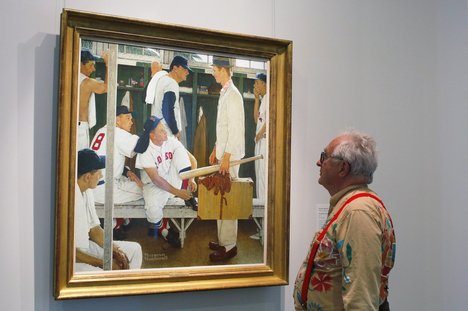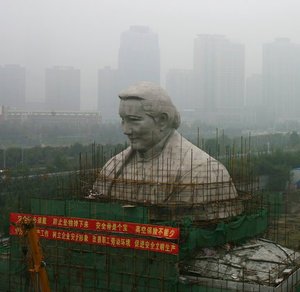(p. C3) LOS ANGELES — When Quentin Tarantino’s “The Hateful Eight” is released in a special roadshow version (with overture, intermission and additional footage) on Dec. 25, it will represent a feat worthy of the heist in the director’s “Jackie Brown.”
The film is scheduled to open on 96 screens in the United States and four in Canada, all in 70-millimeter projection, a premium format associated with extravaganzas of the 1950s and 1960s.
Yet from a theatrical standpoint, the technology is nearly obsolete. Last year, “Interstellar” opened in 70 millimeter at only 11 comparable locations. There were only 16 in 2012 for “The Master,” which renewed interested in the format. No film has opened with 100 70-millimeter prints since 1992. According to the National Association of Theater Owners, 97 percent of the 40,000 screens in the United States now use digital projection.. . .
“We looked around for anybody who was selling them,” said Erik Lomis, Weinstein’s president of theatrical distribution and home entertainment. “We tried to keep it as quiet as possible as to why. Eventually word leaked out why we were looking for them, and then the price went up.”
. . .
“We’ve been accused of actually cornering the market on 70-millimeter projectors,” Mr. Cutler said. “It’s probably pretty true. There probably aren’t too many out there that we didn’t find.” Most of them were destroyed, he added, during the conversion to digital projection.
. . .
Ultra Panavision also produces subtle aesthetic effects, unusual even to viewers familiar with 70 millimeter. The lens “for lack of a better word is a softer lens,” Mr. Sasaki said. During a screening of test footage for the film, he pointed out the impressionistic qualities of the focus and explained how the image catered to our eyes’ natural depth cues.
With projectors found and lenses made, the next hurdle is labor: Most theaters no longer have projectionists with a working knowledge of these machines. Mr. Cutler’s company will provide training for each site. “One way or the other, we will fulfill this need,” he said. “It will be a combination of house staff that we can train, professional projectionists that we can bring in, projectionists that we can find locally, and potentially some technical staff that we’ll bring in.” Every theater showing the film will get a spare set of belts, fuses and light bulbs, and instructions. Mr. Cutler’s staff will also be standing by for calls.
For the full story, see:
BEN KENIGSBERG. “In a World Gone Digital, Room for a Lost Format.” The New York Times (Thurs., NOV. 12, 2015): C3.
(Note: ellipses added.)
(Note: the online version of the story has the date NOV. 11, 2015, and has the title “Tarantino’s ‘The Hateful Eight’ Resurrects Nearly Obsolete Technology.”)




